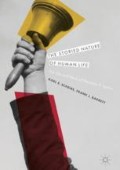Abstract
Over the past few years, I have asked more than 30 adults, most of them psychologists, to define the term “emotion.” After each respondent formulated a definition, I asked him or her to give me an instance, an illustration, of emotion drawn from observation of self or others. Little uniformity characterized the off-the-cuff definitions save for one feature. Almost all the respondents included in their definitions a locus for emotion: inside the body. The psychologists in my sample phrased their definitions with the language of psychophysiology, sometimes elegantly. The agreement on bodily locus is not surprising—all of us have been exposed to the writings of several generations of textbook authors who composed chapters on emotion with the vocabulary of psychophysiology. These authors were indebted to the work of earlier exponents of this paradigm. William James and Walter B. Cannon, each in his own way, focused research and theory on emotion as internal happenings. An examination of current textbooks shows no break with this tradition.
Access this chapter
Tax calculation will be finalised at checkout
Purchases are for personal use only
References
Averill, J. R. (1974). An analysis of psychophysiological symbolism and its influence on theories of emotion. Journal for the Theory of Social Behavior, 4, 147–190.
Bruner, J. (1986). Actual minds, possible worlds. Cambridge, MA: Harvard University Press.
Chun, K., & Sarbin, T. R. (1970). An empirical study of “metaphor to myth transformation”. Philosophical Psychology, 4, 16–20.
Geertz, C. (1980). Blurred genres: The refiguration of social thought. The American Scholar, 49, 165–179.
Goffman, E. (1959). The presentation of self in everyday life. Garden City, NY: Doubleday Anchor.
Heider, F., & Simmel, E. (1944). A study of apparent behavior. American Journal of Psychology, 57, 243–259.
Lakoff, G., & Johnson, M. (1980). Metaphors we live by. Chicago: University of Chicago Press.
Lazarus, R. S., Coyne, J. C., & Folkman, S. (1984). Cognition, emotion, and motivation: The doctoring of Humpty-Dumpty. In K. R. Scherer & P. Ekman (Eds.), Approaches to motivation. New York: Psychology Press.
Michotte, A. E. (1963). The perception of causality (T. R. Miles & E. Miles, Trans.). London: Methuen. (Original work published 1946).
Pepper, S. (1942). World hypotheses. Berkeley: University of California Press.
Sarbin, T. R. (1954). Role theory. In G. Lindzey (Ed.), Handbook of social psychology (Vol. I, pp. 223–258). Reading, MA: Addison-Wesley.
Sarbin, T. R. (1968a). On the distinction between social roles and social types, with special reference to the hippie. American Journal of Psychiatry, 125, 1024–1031.
Sarbin, T. R. (1968b). Ontology recapitulates philology: The mythic nature of anxiety. American Psychologist, 23, 411–418.
Sarbin, T. R. (Ed.). (1986a). Narrative psychology: The storied nature of human conduct. New York: Praeger.
Sarbin, T. R. (1986b). The narrative as the root metaphor for psychology. In T. R. Sarbin (Ed.), Narrative psychology: The storied nature of human conduct (pp. 3–21). New York: Praeger Publishers.
Sarbin, T. R. (1986c). Emotions and acts: Roles and rhetoric. In R. Harre (Ed.), The social construction of emotions (pp. 83–97). Oxford: Basil Blackwell.
Sarbin, T. R., & Allen, V. L. (1968). Role theory. In G. Lindzey & E. Aronson (Eds.), Handbook of social psychology, Vol. I (pp. 488–507). Reading, MA: Addison-Wesley Press.
Sarbin, T. R., & Scheibe, K. E. (Eds.). (1983a). Studies in social identity. New York: Praeger.
Scheibe, K. E. (1979). Mirrors, masks, lies, and secrets. New York: Praeger.
Turbayne, C. (1962). The myth of metaphor. New Haven: Yale University Press.
Zajonc, R. S. (1984). The interaction of affect and cognition. In K. R. Scherer & P. Ekman (Eds.), Approaches to motivation. New York: Psychology Press.
Author information
Authors and Affiliations
Rights and permissions
Copyright information
© 2017 The Author(s)
About this chapter
Cite this chapter
Scheibe, K.E., Barrett, F.J. (2017). Emotions as Narrative Emplotments. In: The Storied Nature of Human Life. Palgrave Macmillan, Cham. https://doi.org/10.1007/978-3-319-48790-8_7
Download citation
DOI: https://doi.org/10.1007/978-3-319-48790-8_7
Published:
Publisher Name: Palgrave Macmillan, Cham
Print ISBN: 978-3-319-48789-2
Online ISBN: 978-3-319-48790-8
eBook Packages: Behavioral Science and PsychologyBehavioral Science and Psychology (R0)

